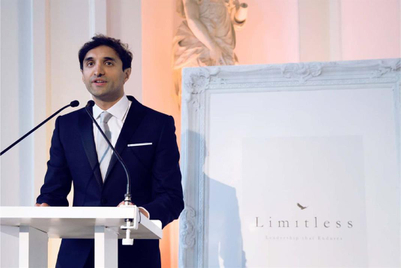
For years the stereotypical Japanese drinker has been the ‘salaryman’. But as men in their 20s shun the high-octane, alcohol-sodden lifestyle of their fathers, their female counterparts are taking over - with implications for the nation’s alcohol brands.
According to Japan’s Ministry of Health, Labour and Welfare, despite a continued decrease in alcohol consumption, the proportion of twenty-something women who drink has risen from 80 per cent to 90.4 per cent over the past year. Consumption among men in the same age bracket fell from over 90 per cent to 83.5 per cent. What’s more, the proportion of young women drinking more than 60mg of alcohol per day increased from 6.7 per cent to 11.7 per cent.
Industry observers say the findings reflect the changing nature of the roles of men and women in the country and the widely documented rise of so-called ‘carnivorous’, more assertive women against ‘herbivorous’, somewhat feminised men with diminished interest in careers, the opposite sex and ‘macho’ activities such as drinking beer with friends or colleagues.
“Men and women are moving away from the traditional ideas of masculinity and femininity,” says Hiroki Ito, insight director at McCann Erickson in Tokyo. “Alcoholic drinks no longer have to be considered drinks for men.”
Indeed, Phil Rubel, CEO of Saatchi & Saatchi Fallon Tokyo, which works with Heineken and Diageo Moët Hennessy, says that “obligatory drinking” with the boss is becoming a thing of the past for male office workers. The combination of increased health consciousness and financial concerns is significantly weakening the long-standing view of alcohol as “a proving ground for masculinity”.
On the other hand, women represent a growth market due to an apparent lack of concern with regard to financial issues. “Most still feel that in the end they will get married and won’t be the primary breadwinner in the home, so before that, they feel free to enjoy life as they choose,” Rubel says.
However, female drinkers seem less interested in the traditional beer and sake. Favoured tipples include low-calorie ready-to-drink products such as chu-hai (low-alcohol fruit-flavoured drinks often sold in cans), ume-shu (plum wine), wine (particularly sparkling or champagne), premium and low-calorie beer, and shochu.
“What women look for in these drinks is sweetness, stylishness and low calories,” states Ito. Yet aside from ume-shu brands such as Choya, and selected chu-hai brands like Suntory’s Calori and Kirin’s Hyoketsu, which feature female spokespeople to appeal to women and capture the attention of men, minimal effort has been made to market to female consumers directly.
“There isn’t really any brand that is specifically aimed at women,” says Kelvin Chan, a research manager at Euromonitor International. Chan claims that while there is evidence for growing freedom of expression among women, taboos still exist. “There are more social constraints than actual regulations when it comes to marketing to females. This is why alcoholic drinks never state they are targeting female consumers.”
Nonetheless, Euromonitor predicts a significant increase in investment from brands in marketing to younger drinkers, and in particular women. It also notes “ample room for innovation”.
“If beverage companies accept that traditional drinks are not as appealing as they once were, they can focus more on new product entries,” notes Rubel. “Japan is already adept at this; the industry is quite inventive and seasonal. They are not doing a bad job, but need to recalibrate their efforts to adapt to changing tastes and economic circumstances.”
Got a view?
Email [email protected]
This article was originally published in 3 December 2009 issue of Media.
According to Japan’s Ministry of Health, Labour and Welfare, despite a continued decrease in alcohol consumption, the proportion of twenty-something women who drink has risen from 80 per cent to 90.4 per cent over the past year. Consumption among men in the same age bracket fell from over 90 per cent to 83.5 per cent. What’s more, the proportion of young women drinking more than 60mg of alcohol per day increased from 6.7 per cent to 11.7 per cent.
Industry observers say the findings reflect the changing nature of the roles of men and women in the country and the widely documented rise of so-called ‘carnivorous’, more assertive women against ‘herbivorous’, somewhat feminised men with diminished interest in careers, the opposite sex and ‘macho’ activities such as drinking beer with friends or colleagues.
“Men and women are moving away from the traditional ideas of masculinity and femininity,” says Hiroki Ito, insight director at McCann Erickson in Tokyo. “Alcoholic drinks no longer have to be considered drinks for men.”
Indeed, Phil Rubel, CEO of Saatchi & Saatchi Fallon Tokyo, which works with Heineken and Diageo Moët Hennessy, says that “obligatory drinking” with the boss is becoming a thing of the past for male office workers. The combination of increased health consciousness and financial concerns is significantly weakening the long-standing view of alcohol as “a proving ground for masculinity”.
On the other hand, women represent a growth market due to an apparent lack of concern with regard to financial issues. “Most still feel that in the end they will get married and won’t be the primary breadwinner in the home, so before that, they feel free to enjoy life as they choose,” Rubel says.
However, female drinkers seem less interested in the traditional beer and sake. Favoured tipples include low-calorie ready-to-drink products such as chu-hai (low-alcohol fruit-flavoured drinks often sold in cans), ume-shu (plum wine), wine (particularly sparkling or champagne), premium and low-calorie beer, and shochu.
“What women look for in these drinks is sweetness, stylishness and low calories,” states Ito. Yet aside from ume-shu brands such as Choya, and selected chu-hai brands like Suntory’s Calori and Kirin’s Hyoketsu, which feature female spokespeople to appeal to women and capture the attention of men, minimal effort has been made to market to female consumers directly.
“There isn’t really any brand that is specifically aimed at women,” says Kelvin Chan, a research manager at Euromonitor International. Chan claims that while there is evidence for growing freedom of expression among women, taboos still exist. “There are more social constraints than actual regulations when it comes to marketing to females. This is why alcoholic drinks never state they are targeting female consumers.”
Nonetheless, Euromonitor predicts a significant increase in investment from brands in marketing to younger drinkers, and in particular women. It also notes “ample room for innovation”.
“If beverage companies accept that traditional drinks are not as appealing as they once were, they can focus more on new product entries,” notes Rubel. “Japan is already adept at this; the industry is quite inventive and seasonal. They are not doing a bad job, but need to recalibrate their efforts to adapt to changing tastes and economic circumstances.”
Got a view?
Email [email protected]
This article was originally published in 3 December 2009 issue of Media.


.jpg&h=334&w=500&q=100&v=20250320&c=1)

.jpg&h=334&w=500&q=100&v=20250320&c=1)
.jpg&h=334&w=500&q=100&v=20250320&c=1)
.jpeg&h=334&w=500&q=100&v=20250320&c=1)




.jpg&h=334&w=500&q=100&v=20250320&c=1)







.jpg&h=268&w=401&q=100&v=20250320&c=1)